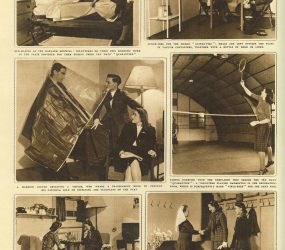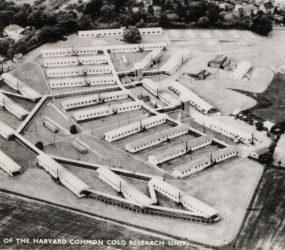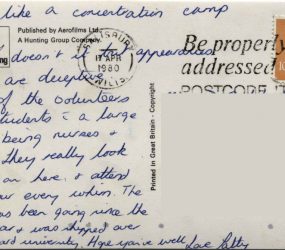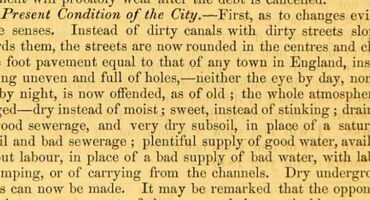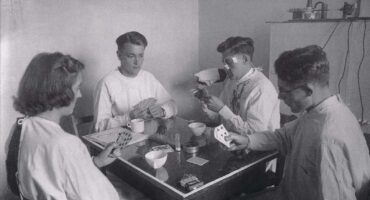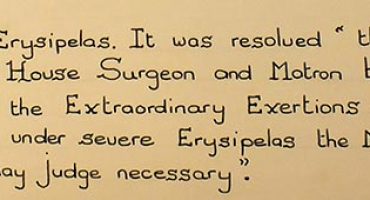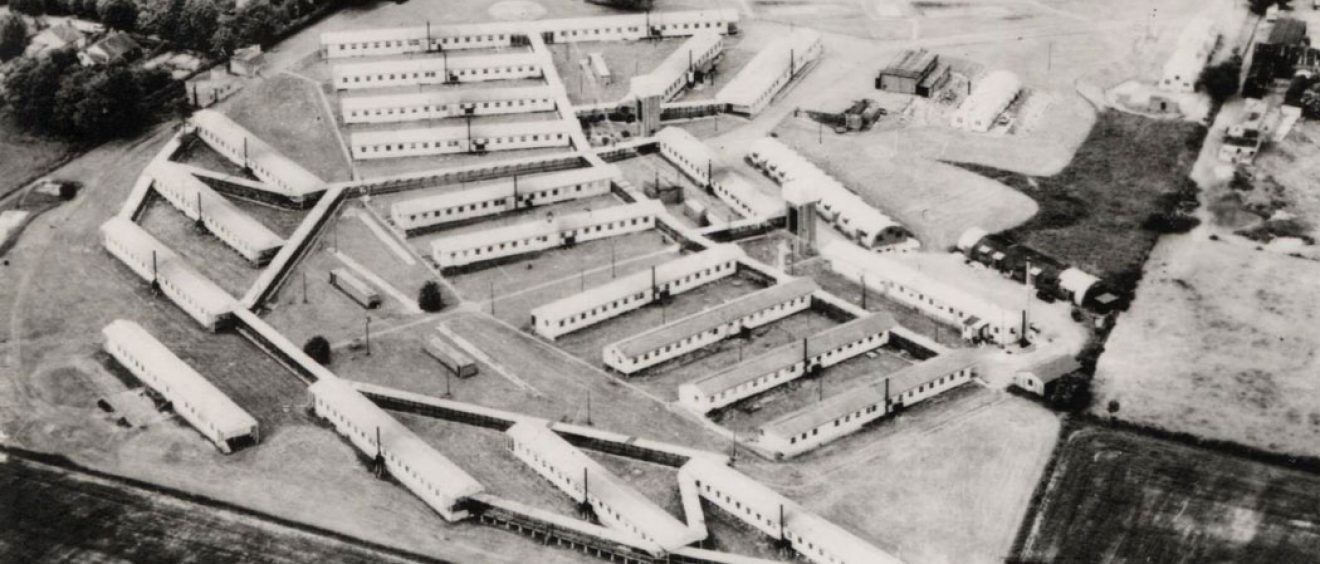
Harvard Hospital – Common Cold Unit
After the war The Harvard Hospital was donated back to the UK and taking charge of the site was Dr Christopher Andrewes (Sir) for the study of common colds.
‘We have learnt a good deal about the control of the major killing plagues – cholera, typhus, typhoid, plague, yellow fever and small-pox; we no longer go about, at least in this country, in mortal fear of these infections. We can, therefore, afford to turn our attention to the lesser plagues, the miseries and inconveniences, such as influenza, sore throats and colds. These do, in fact, kill the very young and the very old and they are particularly important because of the great wastage of valuable man-power which they cause.
Staying at the unit
The hospital comprised of 6 huts divided into two to form 12 volunteer flats. In each flat a pair of volunteers stayed for 10 days. They were isolated from other humans except doctors and nurses who wore gowns and masks.
Wednesday – arrive, examination and x-ray, no treatment for 3 days as quarantine from any colds from outside
Saturday – drops were administered to the nose.
For the next week – pulse, temperature and symptoms were recorded in a diary
End of the 10 day stay – compare notes between subjects
Facilities
Rooms included radio, telephone, books, games, a small dining space, kettle, cutlery, crockery and own bedroom. Food was delivered to a box outside the door. Volunteers were allowed out for walks outside but needed to avoid people, places and vehicles. (This was why the site at Harvard Hospital was ideally placed, on the outskirts of the city with proximity to transport but isolated enough to limit contact).
The landscape of the surrounding area in part helped to recruit volunteers who could enjoy fresh air and countryside. Food rationing too, which was still in place in the early years, also meant that a cooked breakfast, lunch and evening meal was an attractive perk. Originally everyone had to wash their hands in a bowl outside the flat but the cold winter of 1946-1947 meant these facilities were frozen so this had to change.
The opportunity to volunteer was widely advertised as 10 day free holiday with travel expenses for those aged 18-50 years; plus £1.25 a day pocket money.
Who were these volunteers?
Most were university students during holiday time but this meant that during term-time there was a lack of subjects. Interestingly ICI gave their employees from the Wills Cigarette Factory full pay to come ‘on
holiday’ to the unit!
Staff
The Medical Research Council employed medical staff, laboratory technicians and clerical personnel. The
Ministry of Health supplied the catering and maintenance teams as well as a matron.
‘I used to deliver to the Common Cold Unit…I’d arrive at 8 in the morning and Betty at the gate bungalow would have the kettle on… we used to laugh if we had a sneeze after going there…’
As well as the photos held in our collection, watch the videos below that we found on YouTube relating to the Harvard Hospital.

